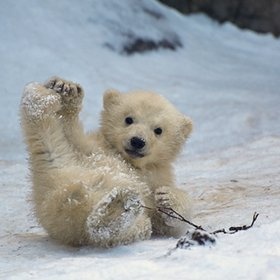As a kid I had many teddy bears, stuffed animals, and beanie babies; they were the objects of affection and play for myself and friends. Looking back I think fondly of the days drenched in imagination and games my sister, “Lamby” (my stuffed lamb, naturally), Arden (my sister’s stuffed kola bear), and I spent together. Yet, prior to watching Jon Mooallem’s TED talk, “How the teddy bear taught us compassion,” I was unaware of the origins of our favorite toys.
In his brief but touching talk he reveled the little known history of how the iconic ‘Teddy Bear’ came to be: an act of mercy on a helpless black bear by President Theodor Roosevelt. This image was transformed by the toy industry into the snuggly bear we all know and love today. Yet, not long before this moment in history bears were seen as dangerous, mysterious creatures “parallel” to human existence… not exactly the image you want to tuck in to bed with your child at night. This change in consciousness came from the human ability to control the lives of these bears. Wild animals and the natural environment were no longer major threats to humanity, the situation reversed, and instead they were vulnerable to humanity. This story of vulnerability created compassion and romanticism in society’s collective consciousness, one of the reasons behind an emergence of environmentalism and the environmental protection movement.
The use of animals as allegories for acts of human compassion, as well as domination, Mooallem argues, has been seen time and again since the “Teddy Bear.” Society’s infatuation with the image of a helpless polar bear in the face of the consequences of anthropogenic climate change is just one example. Mooallem’s argues that nature can either be saved or destroyed based on the, “compassion or indifference of humans.” This compassion is based on the stories that elicit emotion and suddenly “imagination has become an ecological force.”
In thinking about climate this idea has been revolutionary. The image of a stranded polar bear, put there because of human actions, has elicited this compassion in society’s collective consciousness. For many, emotion and compassion drives their actions. We need collective action and a collective consciousness to effectively mitigate climate change.
[youtube_sc url=”https://www.youtube.com/watch?v=EEjyPqyFe_s”]


